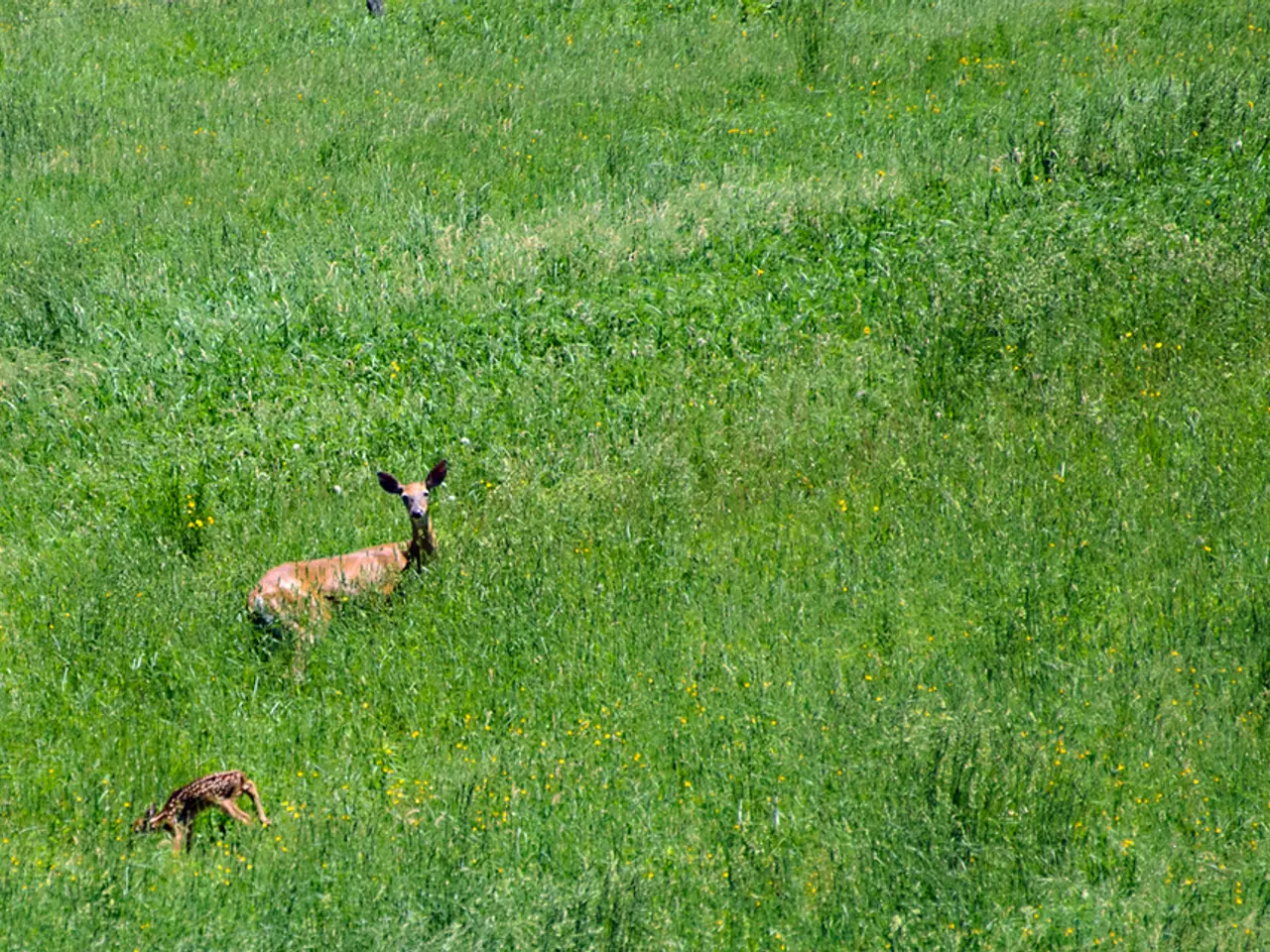Hidden British Isle Offers Peaceful Escape Surrounded by Breathtaking Wildlife
Exploring Brownsea Island: A Hidden Gem in England's Natural Landscape
Nestled in Poole Harbour, Dorset, lies a hidden gem - Brownsea Island. This underrated wildlife spotting destination in England is renowned for its rare red squirrel population and diverse birdlife, including kingfishers, terns, and oystercatchers.
The island, approximately a mile and a half long, offers a unique haven for wildlife, boasting a range of habitats such as woodland, heathland, and a lagoon. This creates an ideal setting for nature photography and wildlife watching, with the Lookout wildlife observatory offering great birdwatching views.
Brownsea Island is not just a haven for wildlife, but also for history enthusiasts. The island has been inhabited by Romans, subject to Viking raids, and used as a private Victorian playground for wealthy English families. One can explore the wooded trails of Brownsea Island and discover secluded lakes, historical sites like Brownsea Castle, and a wooden playground inspired by red squirrels.
Visitors can also enjoy various outdoor activities on the island. Free trails let visitors explore the diverse environments, including beaches, woodlands, and lagoons. On the South Shore, one can kayak, paddleboard, or boat, with equipment hire available at the Watersports Academy. The North Shore, however, is a protected bird nesting area and not for watersports.
For those seeking a more immersive experience, camping is available on the island. Visitors can either pitch their own tent, rent tents, or book one of the two bothies or holiday cottages for an overnight stay. Camping here follows in the footsteps of Baden-Powell and the first Scouts.
Brownsea Island is open daily from 10:00 AM to 5:00 PM for visitors. It is managed by the National Trust, a conservation charity, with a focus on conservation and animal welfare. Accessibility features include a shuttle bus, wheelchair and walking pole hire, British Sign Language interpretation, and sensory backpacks to enhance visitor experience. Regular ferries run from Poole Harbour and Sandbanks, making it easily accessible.
Visitors should respect wildlife, especially by not entering the North Shore during bird nesting seasons to protect habitats. Bring suitable outdoor gear for walking and potential camping, and book accommodations or camping spots in advance.
Brownsea Island provides an immersive wildlife experience combined with historical interest and outdoor activities, making it a standout yet often overlooked spot in England’s natural landscape. The island is open from end of March or early April to October, and visitors can hop aboard one of the bright yellow ferries to the island from Sandbanks or Poole Quay.
For essentials like ice cream, chips, and heartier meals like sausage rolls and freshly baked scones, visitors can visit The Villano Café at the campsite on Brownsea Island. However, as no grocery store is available on the island, visitors should bring enough snacks and supplies beforehand.
History buffs can join a walking tour of Brownsea Island, which includes a peek inside Brownsea Castle. South Shore Beach, a partly sandy, seashell-covered spot suitable for swimming or beach picnics, is another highlight.
Brownsea Island is a haven for wildlife, particularly red squirrels, which are native to England but have been pushed out by grey squirrels introduced from North America in the 1800s. The island is less than an hour away from Bournemouth Airport, and London is three hours away.
Visitors are advised to book events on the National Trust website ahead of time. Brownsea Island hosts various events throughout the summer, such as open-air theater productions, live music, yoga and meditation sessions, and nature-themed adventures. Kayaks and paddleboards are available for rent at the Outdoor Center on Brownsea Island. Entry to Brownsea Island is $15 for adults, with discounts for groups.
Travel guides often recommend Brownsea Island as a must-visit destination for those interested in lifestyle and travel, especially nature enthusiasts. Its unique wildlife, diverse habitats, and Historical sites make it an ideal spot for outdoor activities, nature photography, and history buffs.




